Some exercises that improve posture, like the locust pose, cobra pose, or child's pose can help to stretch and strengthen the muscles in your back and abdomen. They can improve balance and relieve tension in your shoulders, neck, or chest.
Poor posture can lead to lower back pain, neck pain, tension headaches or even imbalance, increasing your risk for vertebral injuries or conditions like herniated discs or sciatica.
These exercises can help to improve and maintain adequate posture, and can be performed 2 to 3 times a week. However, if you experience any pain or discomfort when performing the exercises, you should consult a doctor for further assessment.
9 exercises for posture
Some exercises that help improve posture are:
1. Locust pose
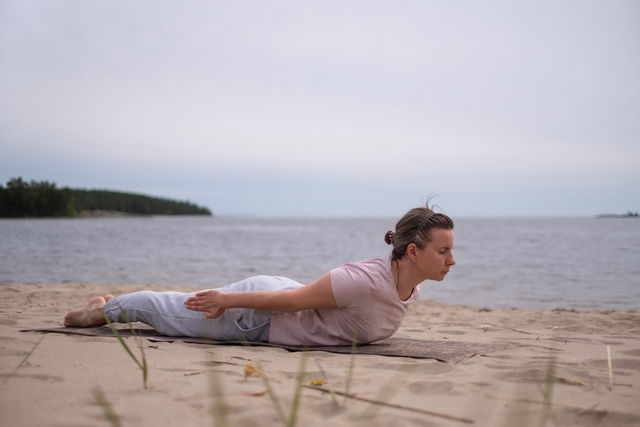
How to do it: lie face down with your arms at your sides and then raise your head and torso off the floor, contracting your lower back back. Then lower slowly to the ground.
Repeat slowly, 3 to 5 times.
2. Cobra pose
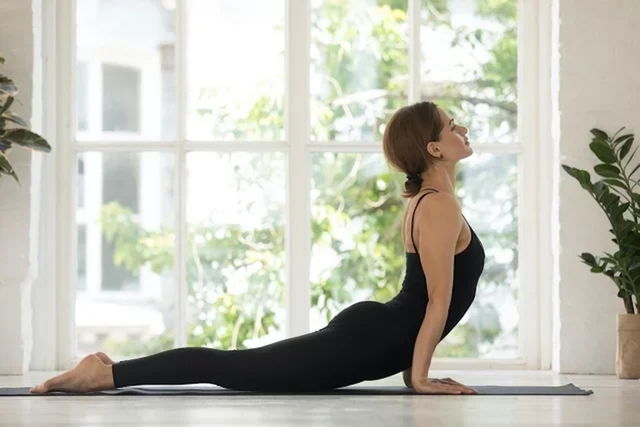
How to do it: lie on your stomach, then place your hands under your shoulders and raise your torso from the floor. Keep your arms straight, look straight ahead, and keep your neck perpendicular to the floor and your shoulders away from your head.
3. Child's position
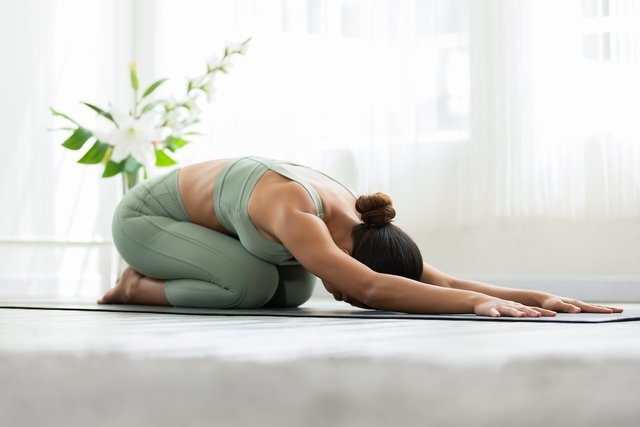
How to do it: get to the floor on your knees and sit on your heels. Then lower your torso to your knee and stretch your arms on the floor above your head. Keep your back stretched.
Hold this position for 30 seconds to 1 minute.
4. Downward-facing dog pose
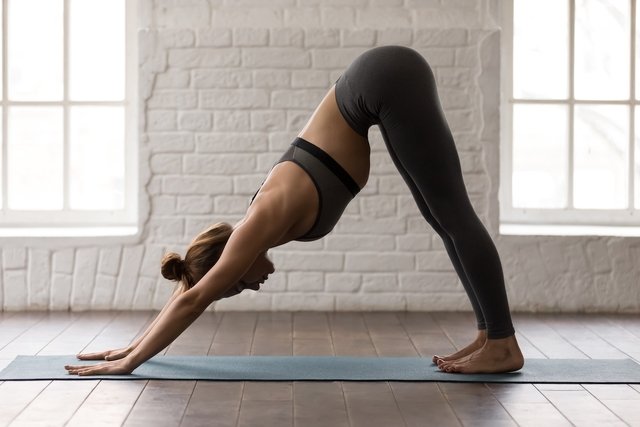
How to do it: Start standing on your feet, then place your hands on the floor in front of you. Form a pyramid position with your body.
Maintain this position for 30 seconds to 1 minute.
5. Forward plank
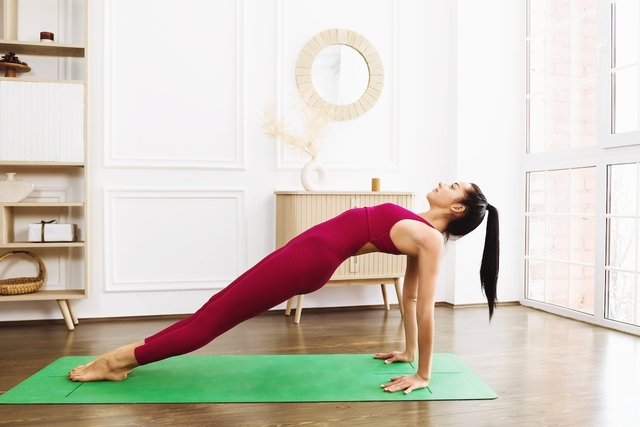
How to do it: sit on the ground and stretch your legs in front of you. Then lean back and support your torso on your hands behind you. Then raise your legs from the floor, supporting your lower body on your feet. Keep your legs straight and your spine and neck aligned.
Maintain this position for 30 seconds to 1 minute.
6. Cat pose
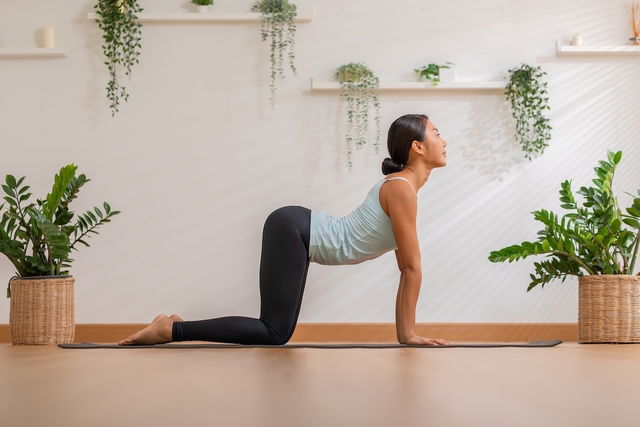
How to do it: get on the floor on all fours, with your knees hip-width apart and your wrists under with your shoulders. Arch your back like a cat, inhaling and looking up. As you exhale, move your back upwards, bending it and looking down towards your navel.
Hold this position for 15 to 30 seconds and return to the starting position and repeat the movement 2 to 4 times.
7. Chest opening
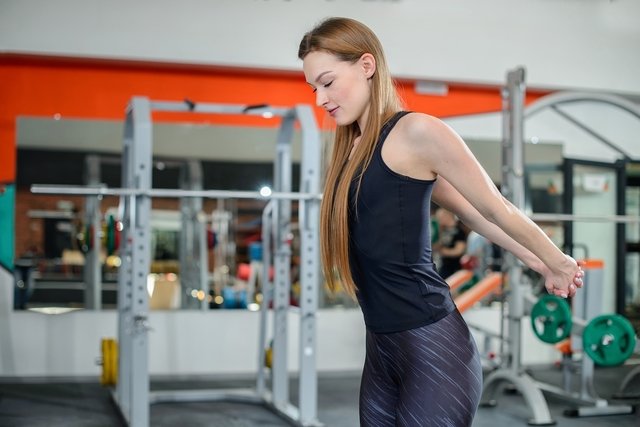
How to do it: standing with your feet shoulder-width apart, bring your arms behind your back and interlace your fingers. Keep your head and spine aligned.
With your hands clasped, raise your arms, inhaling the air, puffing out your chest and slightly tilting your head back. Exhale the air returning to the starting position.
You can repeat this movement 10 times.
8. Bridge
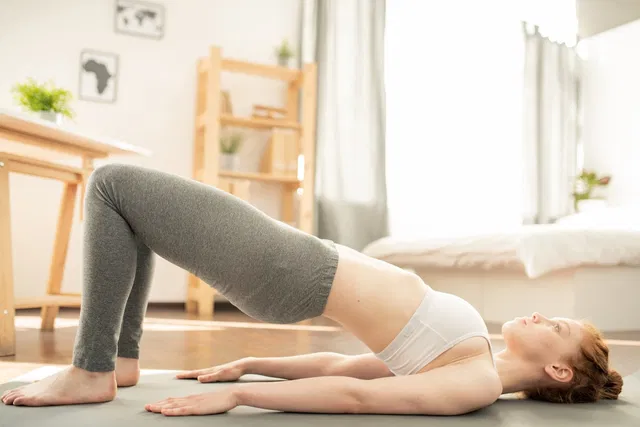
How to do it: lie on your back, with your arms at your side. Bend your knees to place your feet flat on the floor, keeping your heels underneath your knees. Contract your abs and glutes, exhale and raise your hips off the floor until your body forms a straight line from your knees to your head. Hold this position for 30 to 60 seconds and lower your hips as you inhale.
Relax and repeat the exercise 5 times.
9. Hug your legs
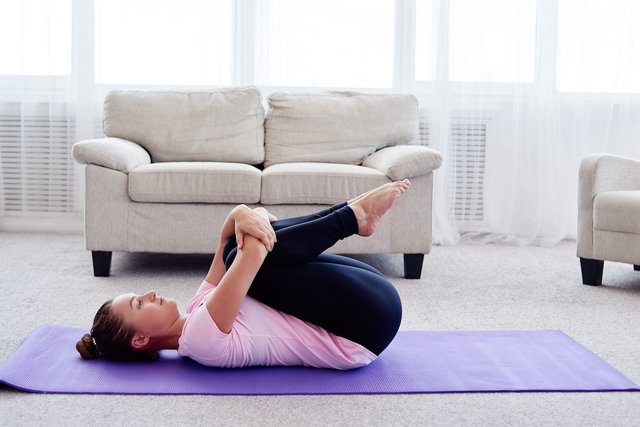
How to do it: lie on your back and bend your knees, keeping your feet on the floor. With the help of your hands, bring your knees towards your chest, maintaining this position for about 15 seconds.
Repeat the movement 5 times.
What exercises help improve posture?
Engaging in balance and muscle strengthening exercises, such as ballet, weight training and horse riding, are also a great way to correct your posture.
Other good examples are different types of dance, pilates or swimming, as these exercises strengthen the erector spinae, pectoral, abdominal and back thigh muscles. Having these muscles strengthened makes it easier to maintain correct posture throughout the day.
If your poor posture causes pain in the back or neck, or frequent headaches, a consultation with an orthopedic surgeon is recommended so that the cause of the poor posture can be diagnosed and the treatment can be more targeted.
Exercises to correct shoulder posture
Working out at the gym or practicing Pilates regularly also helps maintain good posture because it strengthens the muscles.
You should also stretch daily to increase the elasticity of your muscles, which is why Pilates exercises is advantageous, as it requires adequate flexibility.
What should normal posture be like?
Normal posture, or correct posture, is one in which the spine is aligned and maintains the natural curves of the neck, back and lower back.
The head should be straight, aligned with the shoulders, which should be stacked over the hips.
Abnormalities to your posture can lead to health conditions like pain in the lower back, shoulders or neck, scoliosis, lordosis, balance disorders or even difficulty breathing.
How to maintain posture while sleeping
You should ideally lie on your side, with a small pillow between your knees and a pillow to support your head. This allows the spine to remain in its natural position. If possible, check your sleeping posture in a mirror or ask someone else to see if your spine appears to be well positioned.
When sleeping on your back, you should use a flatter pillow under your head and another pillow under your knees. Sleeping on your stomach is not advised.
Do I need to wear a brace to correct posture?
It is not recommended to use braces to correct posture, because they can be counterproductive to any physiotherapy and tend to worsen posture if used chronically.
This can happen because vests force the shoulders back but do not strengthen the muscles properly, leaving them weaker than they should be.
This imbalance in muscular forces harms the spine. One of the secrets to correcting a curved shoulders is not to move the shoulders back but to correctly position your head further back.
When to start physiotherapy
You are advised to see a physiotherapist when you experience:
- Back, shoulder or neck pain
- Tension headaches
- Hyperkyphosis, popularly known as hunchback
- Hyperlordosis
- Scoliosis, which is the lateral deviation of the spine
These conditions should be corrected as soon as possible to prevent pain and prevent other more serious situations, such as a herniated disc and sciatic nerve damage. These conditions may require more thorough physiotherapy, which involves static exercises, guided by the physiotherapist, and GPR (Global Postural Reeducation).
